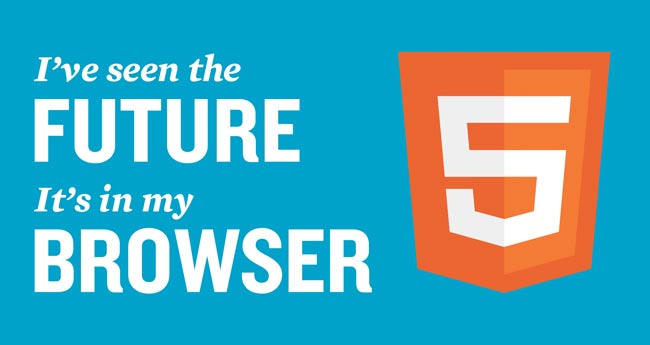The latest version of HyperText Markup Language, HTML 5 is a framework with which web pages and web applications are created. HTML documents are made up of elements created with tags, which organize, define and arrange the different components of a web page like text, images, links and forms. Web browsers are what read these documents and translate them into the visible web pages you see. HTML5’s primary purpose is to improve usability with new forms of media, while still being easily read and modified by humans as well as consistently understood by the devices that run it.
HTML was first developed by Tim Berners-Lee, a physicist working at CERN, and since then a number of versions have been released by his organization; the World Wide Web Consortium (W3C), with the Web Hypertext Application Technology Working Group (WHATWG) – a community looking to improve and evolve HTML. HTML 5 was published as a working draft in January 2008, and is set to receive W3C recommendation by the end of 2014. W3C recommendation is when the standard is endorsed by the W3C after both practical and theoretical review and testing.
HTML5 builds upon HTML4 by allowing more media to be directly embedded in the markup instead of having to use other plug-ins to run them, while still being backwards compatible – allowing older browsers to ignore HTML5 elements. Among the array of features available are: scalable vector graphics, better error handling, application caches, embedding video and audio without dependence on plug-ins like Flash, and improved semantic markup. Semantic markup helps search engines to understand site content, making it easier to rank than if there was non-semantic markup. The Cache Manifest gives the ability to store data offline so you can use features of web applications without being connected to the internet; for example you can draft emails in Gmail offline to send later when connection is available. The newer features include the Canvas Element; which allows for 2D scripted rendering, especially useful for apps, animations and games, and a Geo-location feature for use on mobile devices.
HTML5 isn’t completely compatible or completely incompatible with any browser – different browsers either support or partially support the different features of HTML5 independently. While HTML5 does add a whole bucket of new features, it is still only a framework for content; when it comes to modifying layout, appearance, style and to improve the general aesthetic of the site using CSS (Cascading Style Sheets) to change the presentation of HTML documents is much easier than using the markup itself. Many features to do with layout and appearance which were present in HTML4 have been removed since they are easier to add with CSS. Additionally, when interactivity or animations are needed or if the website’s behavior needs to be changed, external plug-ins, like JavaScript can be embedded to add these capabilities.
There are tons of resources online to learn HTML5. A good source is w3schools.com which gives very detailed tutorials.


